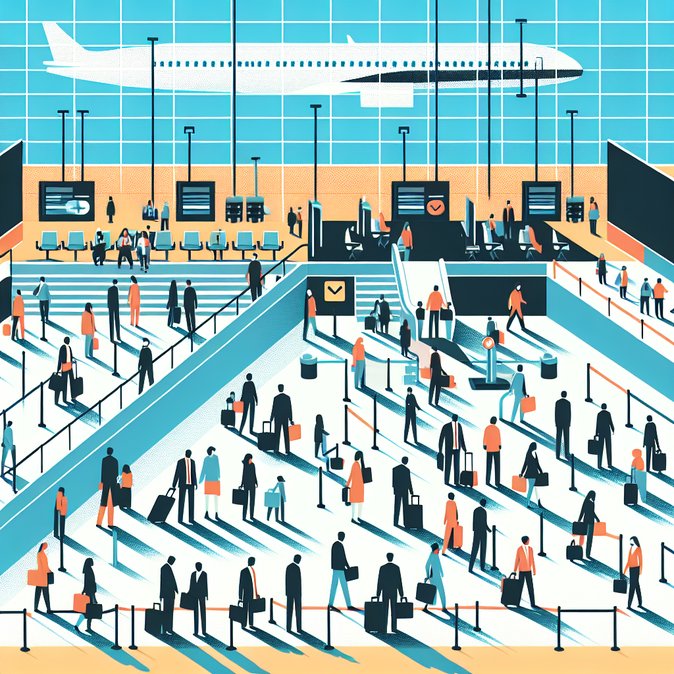
Helsinki-Vantaa Airport has confirmed that 1.5 million travellers passed through its terminals in October 2025, according to data released on 10 November 2025. The figure marks the airport’s strongest single-month performance since 2019 and reflects a steady rebound in both business and leisure traffic to and from Finland.
Finavia, the state-owned airport operator, attributes the growth to three converging trends. First, Asian transfer traffic has started to return as airlines adjust routings that bypass closed Russian airspace, allowing Helsinki to reclaim part of its former role as a northern hub between Europe and Asia. Second, corporate travel budgets have normalised, pushing weekday load-factors on Finnair and its oneworld partners close to 80 %. Third, Finland’s winter tourism marketing—anchored by Lapland’s “Santa-season” and aurora safaris—has encouraged carriers such as Ryanair, Eurowings and Norwegian to up-gauge or add seasonal frequencies.
![Helsinki-Vantaa Airport tops 1.5 million passengers in October—a new post-pandemic high]()
From a corporate-mobility perspective, the numbers matter because Helsinki-Vantaa is the primary gateway for expatriate assignments and short-term business trips into Finland’s technology and clean-energy clusters. Airport CEO Kimmo Mäki noted that security wait times remained below the EU’s 15-minute benchmark for 92 % of passengers, an operational metric closely watched by multinational travel managers.
Infrastructure has kept pace with demand: the €1 billion terminal expansion completed in 2023 added 33 % more border-control capacity and e-gates that can process both EU and visa-waiver nationals. Finavia has also rolled out a Digital Travel Credential (DTC) pilot that allows registered passengers to clear border formalities in under eight seconds—a technology the company claims can eventually cut processing costs by 30 %.
Looking ahead, analysts at CAPA – Centre for Aviation predict Helsinki-Vantaa will finish the year with about 17.8 million passengers, still short of the 21.9 million recorded in 2019 but well above the 70 % recovery rate seen across the Nordic region. The continued reopening of Japanese and South-Korean markets, plus incremental traffic from Finnair’s new codeshare routes (see story below), are expected to keep monthly volumes above 1.4 million through the first quarter of 2026.
Finavia, the state-owned airport operator, attributes the growth to three converging trends. First, Asian transfer traffic has started to return as airlines adjust routings that bypass closed Russian airspace, allowing Helsinki to reclaim part of its former role as a northern hub between Europe and Asia. Second, corporate travel budgets have normalised, pushing weekday load-factors on Finnair and its oneworld partners close to 80 %. Third, Finland’s winter tourism marketing—anchored by Lapland’s “Santa-season” and aurora safaris—has encouraged carriers such as Ryanair, Eurowings and Norwegian to up-gauge or add seasonal frequencies.

From a corporate-mobility perspective, the numbers matter because Helsinki-Vantaa is the primary gateway for expatriate assignments and short-term business trips into Finland’s technology and clean-energy clusters. Airport CEO Kimmo Mäki noted that security wait times remained below the EU’s 15-minute benchmark for 92 % of passengers, an operational metric closely watched by multinational travel managers.
Infrastructure has kept pace with demand: the €1 billion terminal expansion completed in 2023 added 33 % more border-control capacity and e-gates that can process both EU and visa-waiver nationals. Finavia has also rolled out a Digital Travel Credential (DTC) pilot that allows registered passengers to clear border formalities in under eight seconds—a technology the company claims can eventually cut processing costs by 30 %.
Looking ahead, analysts at CAPA – Centre for Aviation predict Helsinki-Vantaa will finish the year with about 17.8 million passengers, still short of the 21.9 million recorded in 2019 but well above the 70 % recovery rate seen across the Nordic region. The continued reopening of Japanese and South-Korean markets, plus incremental traffic from Finnair’s new codeshare routes (see story below), are expected to keep monthly volumes above 1.4 million through the first quarter of 2026.










